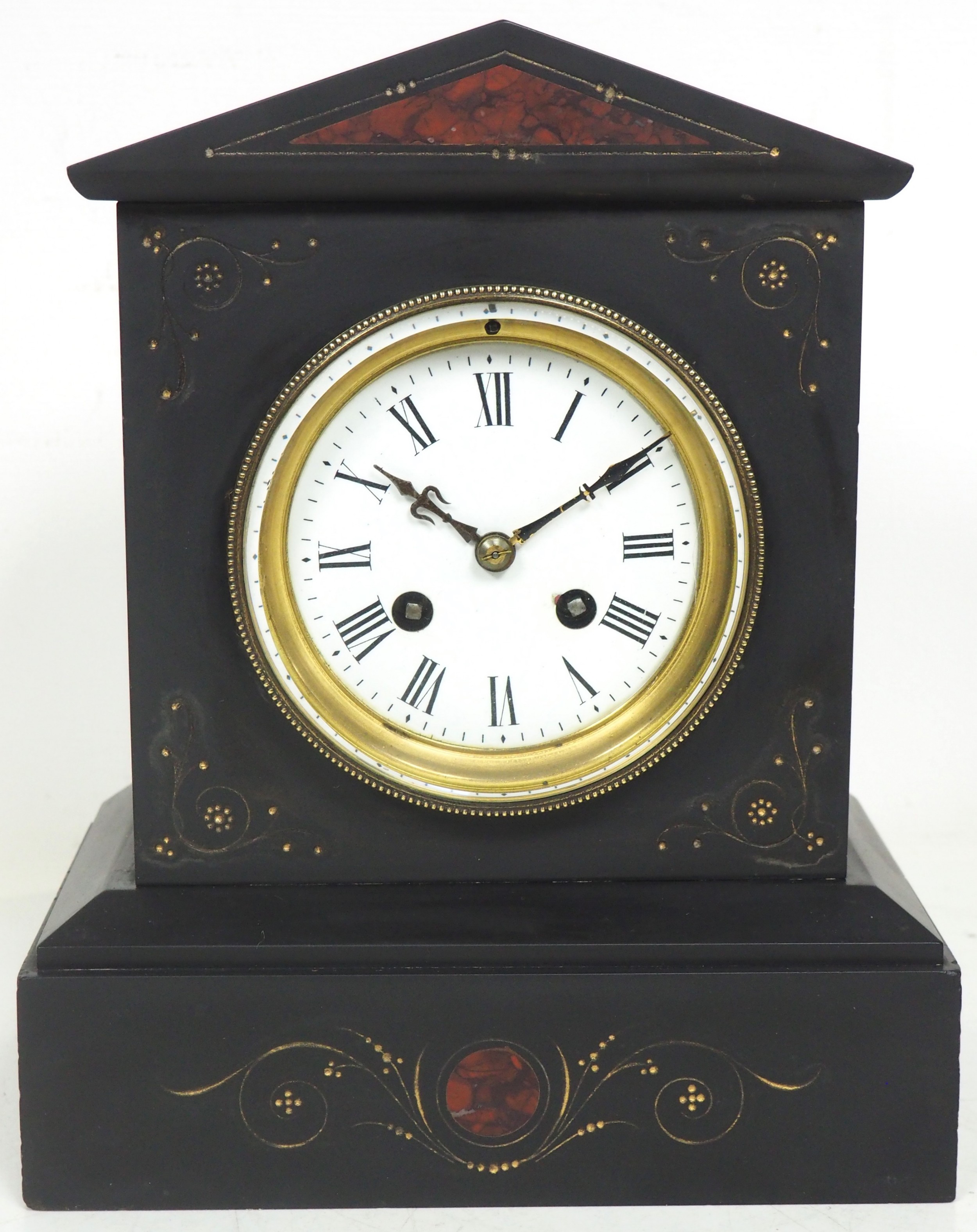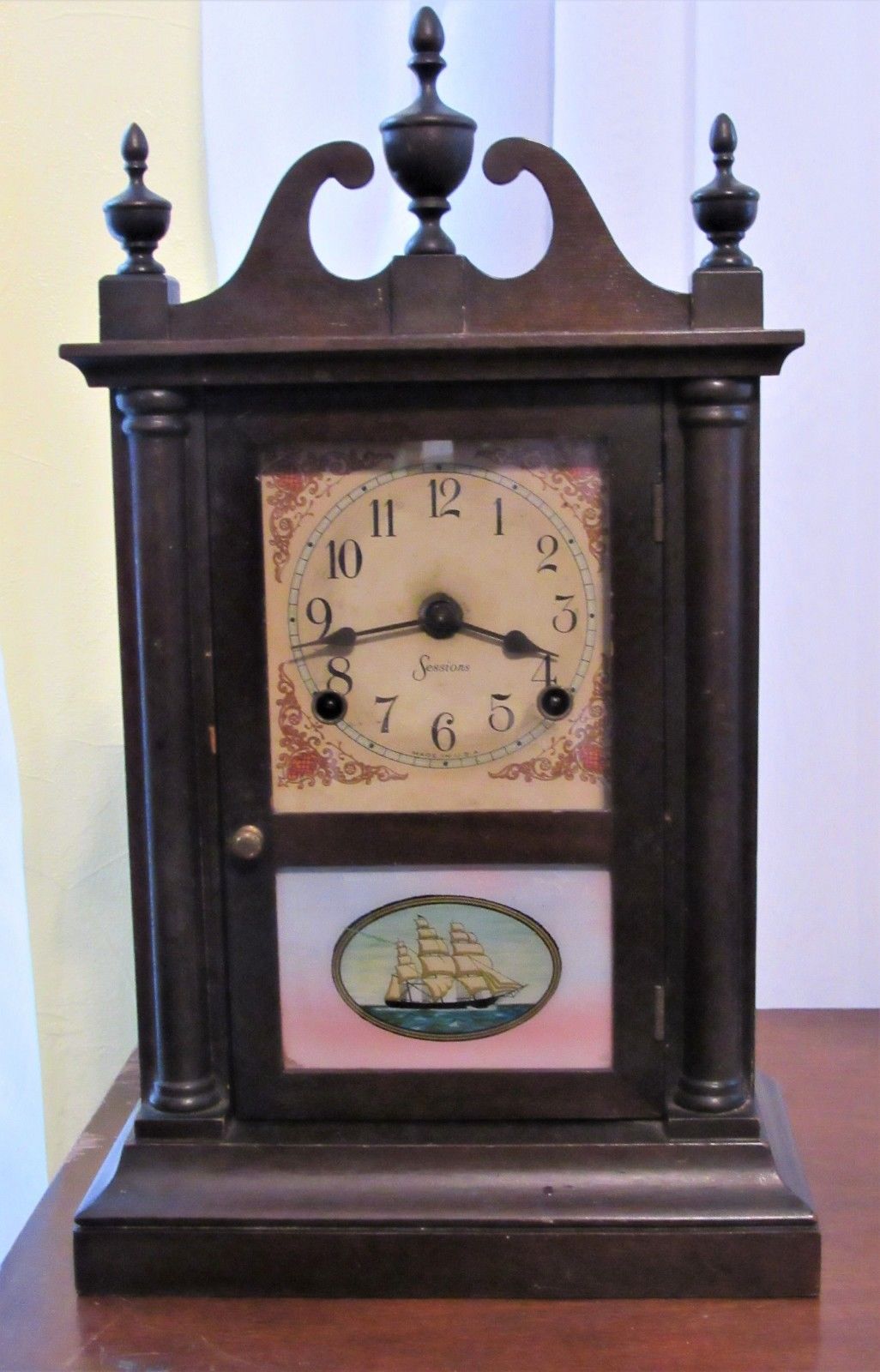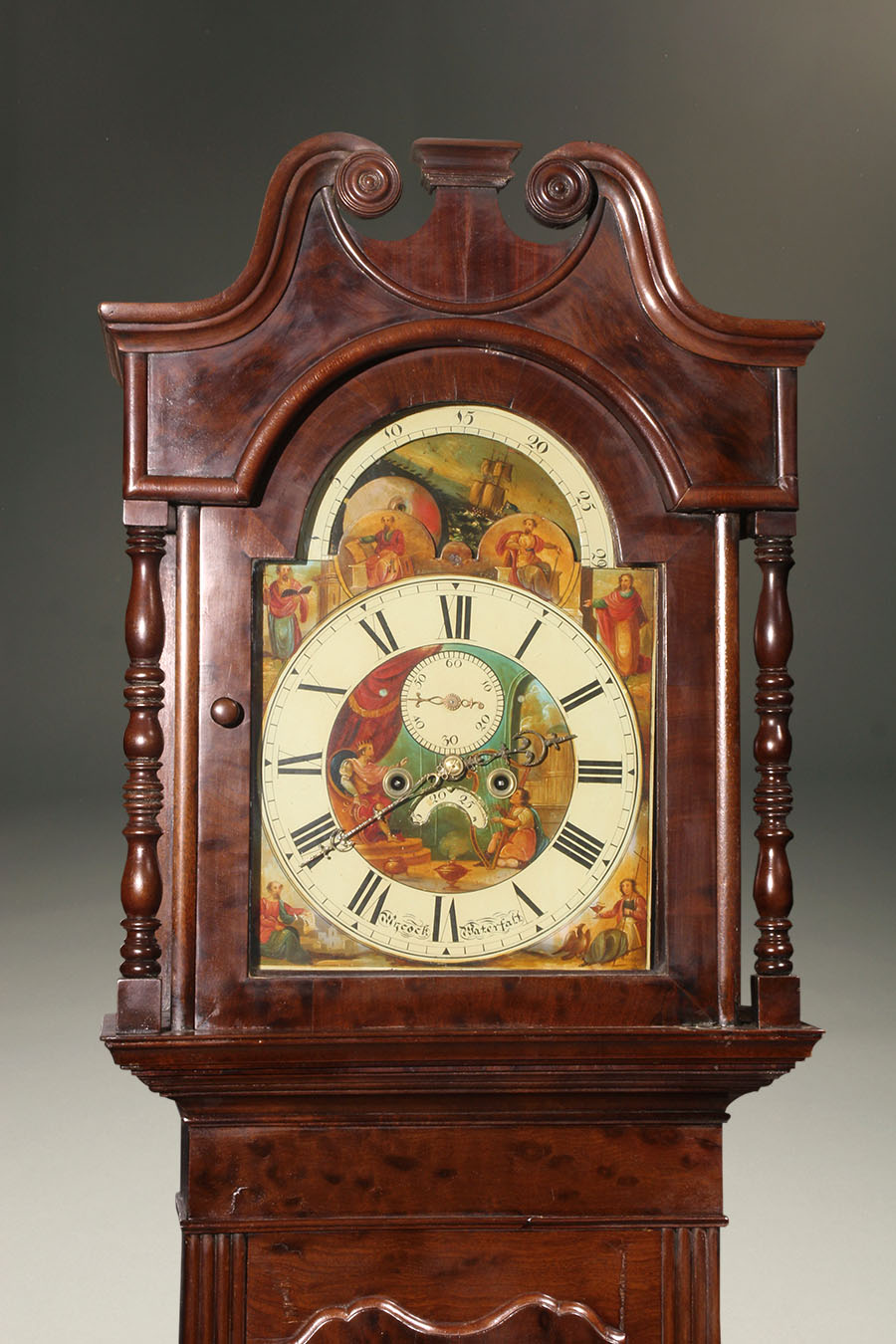
Winding arbour on an Ingraham Nordic banjo clock Winding arbours on an antique Seth Thomas mantel clock (arrows) The smaller hole in the loop end of the “2” on the number 12 is for regulating the clock. On the Ingraham clock (next photo) there is only one set or train of gears that indicate it is a time-only clock, hence the single arbour or winding point. The smaller hole just below the centre cannon is for regulating the clock. On this spring-driven Seth Thomas mantel clock (next photo) the left arbour (arrow) winds the strike side and the right arbour (arrow) winds the time side. Some clocks provide more choices such as the Schatz W3 bracket clock which has 3 musical tones, St Michael’s, Whittington and Westminster. On the other hand, a chime is a musical tone and a typical musical tone found on most clocks with three winding points is the Westminster chime. Older antique clocks from the mid 1800s, for example, typically do not strike on the half-hour to preserve the wind on the strike side. Usually striking clocks have just two winding points. There may or may not be a strike on the half-hour. An antique or vintage clock that is “time and strike”, strikes the indicated time on the hour by means of a single strike for each hour or a two-tone strike such as a Normandy strike or “Bim-Bam” strike. What is the difference between chime and strike?Ī strike is simply a strike. Some clocks will have the regulating arbour located under the centre cannon where the hands are attached. If you have a double-ended key the small end fits that arbour.

It is also an arbour but a smaller one used for regulating the speed of your clock. On some clocks, there is a smaller hole on the clock face near or above the 12 o’clock position. On a clock with three arbours, the centre arbour winds the time train and the left arbour, the strike side and the right, the chime side. Clocks with three winding arbours chime on the quarter-hour making a musical tone. The number of winding arbours corresponds to the number of gear trains (or sets of gears) on a clock.įor example, if there is one hole it is a time-only clock 2 holes mean that it is a time and strike clock, that is, it strikes the appropriate hour on the hour and either a bell or strike on the half-hour (there are always exceptions such as this two train Westminster Chime clockor a time-only clock with an alarm arbour).

These are called “winding arbours” or winding points.

On your clock dial (other than a cable-driven tall case clock) you will see one, two or three holes. Winding arbours or winding points one, two or three – what does each one do? Junghans Sydney C.1911 A chime is a musical tone and a typical musical tone found on most clocks with 3 winding points is the Westminster chime


 0 kommentar(er)
0 kommentar(er)
